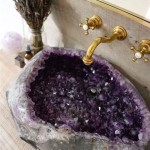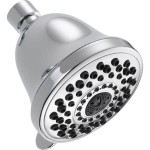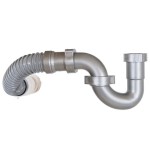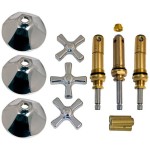How To Install Ceramic Tile Bathroom Shower
Installing ceramic tile in a bathroom shower involves several key steps and requires careful planning and execution. This article provides a comprehensive guide to the process, outlining the necessary materials, tools, and techniques.
Planning and Preparation: Accurate measurements of the shower area are crucial. Calculate the square footage to determine the required amount of tile. Consider adding 10-15% extra to account for cuts and breakage. Selecting the appropriate tile is essential. Choose tiles specifically designed for wet areas, ensuring they are slip-resistant and durable. A layout plan should be created to visualize the tile arrangement and minimize cuts. This also helps determine the starting point for installation.
Gathering Materials and Tools: The project requires specific materials, including backer board (cement board or waterproof drywall), thin-set mortar, tile spacers, grout, sealant, and the chosen ceramic tiles. Necessary tools include a tile cutter or wet saw, notched trowel, grout float, level, measuring tape, safety glasses, and gloves. Ensure all materials and tools are readily available before beginning the installation process.
Preparing the Shower Area: The existing shower surface must be thoroughly cleaned and free of any debris, mildew, or soap scum. If necessary, repair any damaged areas. Install a waterproof membrane according to the manufacturer's instructions. This crucial step prevents water damage behind the tiles. Next, install the backer board, ensuring it is securely fastened to the studs using backer board screws. Leave a 1/8-inch gap between boards to allow for expansion and contraction. Tape and seal the seams with fiberglass mesh tape and thin-set mortar.
Applying Thin-Set Mortar: Starting from the bottom and working upwards, apply a layer of thin-set mortar to the backer board using a notched trowel. The size and depth of the notches depend on the size of the tile being used. Consult the tile manufacturer's recommendations for the appropriate trowel size. Apply only enough thin-set to cover a manageable area at a time, typically 2-3 square feet, to prevent it from drying out before the tiles are placed.
Setting the Tiles: Carefully place each tile onto the thin-set, pressing firmly to ensure proper adhesion. Use tile spacers to maintain even spacing between tiles. A level should be used frequently to ensure the tiles are straight and flush. Periodically check the alignment of the tiles to avoid any noticeable deviations. Cut tiles as needed to fit around fixtures and corners using a tile cutter or wet saw.
Grouting: After the thin-set has cured for at least 24 hours (refer to the manufacturer's instructions), remove the tile spacers. Mix the grout according to the manufacturer's instructions. Apply the grout using a grout float, working it diagonally into the joints between the tiles. Ensure all joints are completely filled. Remove excess grout with a damp sponge, being careful not to pull grout out of the joints.
Cleaning and Sealing: Allow the grout to haze over, then buff the tiles with a clean, damp cloth to remove any remaining grout residue. After the grout has fully cured (typically 72 hours), apply a silicone sealant to all corners and joints where the tile meets fixtures or other surfaces. This provides a waterproof barrier and prevents mold and mildew growth. Clean the tiles one final time to remove any sealant residue.
Curing Time: Allow the sealant to cure completely according to the manufacturer's instructions before using the shower. This typically takes 24-48 hours.
Important Considerations: Throughout the installation process, ensure adequate ventilation. Wear appropriate safety gear, including safety glasses and gloves. Consult local building codes for specific requirements related to shower construction and tiling. Working methodically and carefully ensures a successful and long-lasting tile installation.
Variations in Tile and Installation: Various types of ceramic tiles are available, including porcelain, mosaic, and subway tiles. Each type may have specific installation requirements. Consult manufacturer guidelines for optimal results. Shower niches and benches can be incorporated during the tiling process. These features require careful planning and construction to ensure proper waterproofing and structural integrity.
Maintenance and Repair: Regularly clean the tiled shower area with a mild detergent and water to prevent the buildup of soap scum and mildew. Avoid abrasive cleaners that can scratch the tile surface. Inspect the grout periodically and re-seal as needed to maintain a waterproof barrier. Address any cracked or chipped tiles promptly to prevent further damage and water infiltration.

Part 1 How To Install Tile On Shower Tub Wall Step By

How To Tile A Bathroom Shower Walls Floor Materials 100 Pics Pro Tips

How To Lay Bathroom Tile 5 Easy Steps Rubi Blog Usa

How To Tile A Bathroom Shower Walls Floor Materials 100 Pics Pro Tips

How To Tile A Shower Surround Happihomemade With Sammi Ricke

How To Install A Shower Tile Wall Bathroom

Bathroom Renovation Tiling The Shower From Bathtub To Walk In Remodelando La Casa

How To Tile A Bathroom Shower Walls Floor Materials 100 Pics Pro Tips

Bathroom Renovation Floor Level Shower Install Remodelando La Casa

How To Install Tile In A Bathroom Shower
Related Posts







